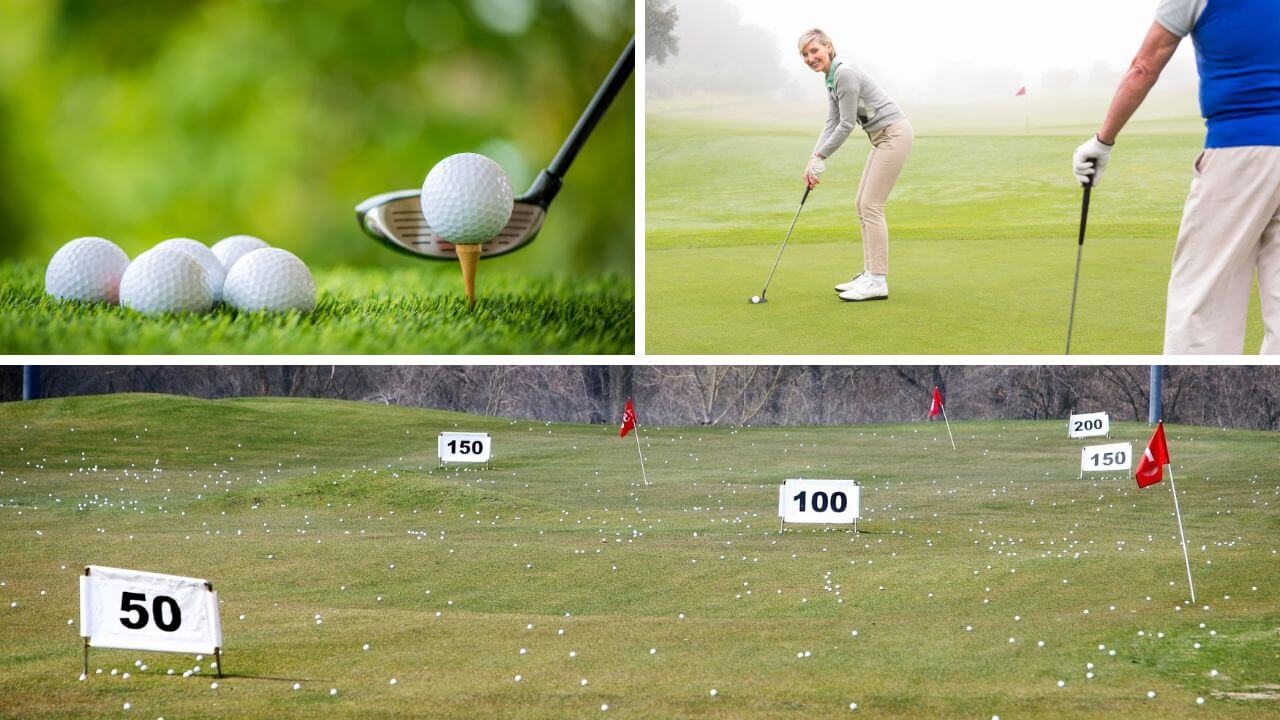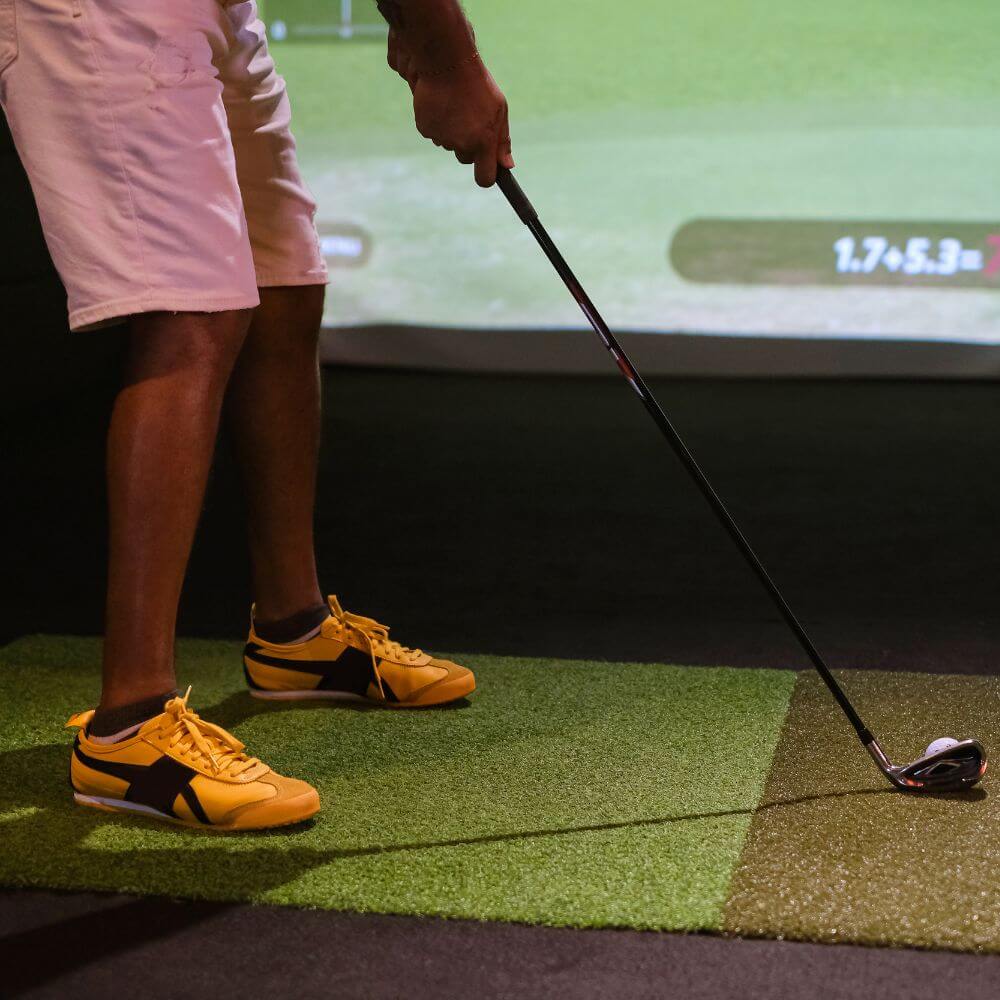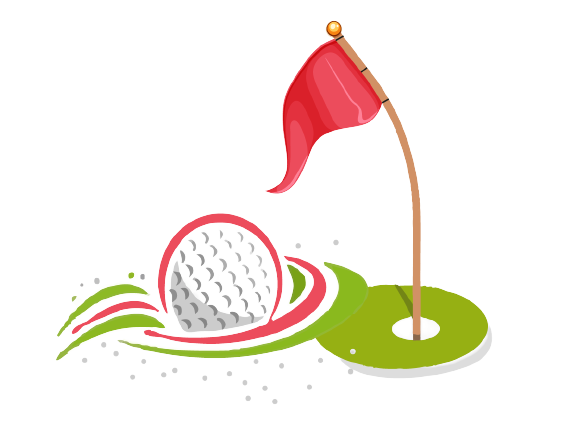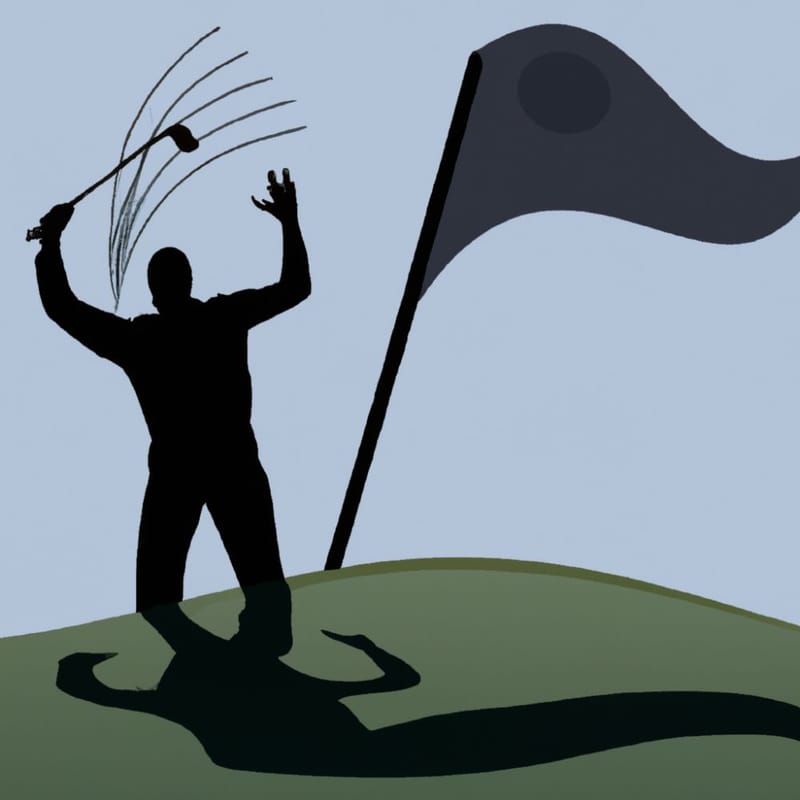Content Summary
The Importance of Golf Practice
I've found that making sure I practice once or twice a week helps me keep my golf swing in rhythm. There is nothing worse than going out to play on the golf course and your swing is out of kilter. Golf is a game of skill and finesse that requires consistent practice to master. Whether you're a beginner or an experienced player, putting in the time to practice can help improve your overall game and lead to better scores on the course.
Golf practice involves honing various aspects of your game, including driving, short game, and putting, among others. The benefits of golf practice go beyond improving your scorecard.
Consistent practice can also lead to better physical fitness and mental health. Golf requires a lot of walking and swinging, which can help burn calories and improve cardiovascular health.
Additionally, the focus required during golf can be a great way to relieve stress and improve mental clarity. For those looking to take their golf game to the next level, consistent practice is essential for success.

With each swing or putt, players have an opportunity to learn from their mistakes and refine their technique. Through dedicated effort over time, players can build muscle memory that leads to greater consistency on the course.
Overall, whether you're a seasoned pro or just starting out in the sport of golf, practicing regularly can lead to improvements in both your physical fitness and mental health while also helping you master different aspects of the game for greater success on the course.
In the following sections we'll dive into some basic and advanced techniques for effective golf practice that will help you get started on your own journey towards mastery!
The Basics of Golf Practice
How Often to Practice
Golf is a sport that requires consistent practice to improve skills and maintain them. However, there is no one-size-fits-all answer to how often you should practice.
Some golfers prefer to practice daily, while others may only have time for a few sessions a week. Ideally, you should aim for at least two sessions per week if you want to see steady progress in your game.
It's important not to overdo it either. Practicing too much can lead to burnout or injuries that could set back your progress. Instead, focus on quality rather than quantity and make sure you give yourself plenty of rest between sessions.
Will Practicing Golf Make Me Better?
Yes, practicing golf can make you better. It is important to practice the right way. Taking one or two lessons with a golf coach first will help establish the right fundamentals for your practice.
Many golfers find that their game improves when they practice golf regularly. Almost anything can help you become a better golfer if you do it enough, but practice is still the best way to improve your game.
If you want to become a better golfer, practice is essential. The key is knowing how and what to practice. The more time you spend practicing the right things, the better your game will be.
What Equipment Is Needed
Golf practice requires some basic equipment that every golfer should have in their arsenal. Of course, golf clubs are the most important item – make sure you have a driver, irons, wedges and putter – but there are some other items worth considering too.
A golf bag is essential for carrying your clubs around the course or range, while golf balls are needed for all types of practice drills and games.
Tees and ball markers are also useful tools when practicing on the driving range or putting green. It’s worth investing in some comfortable golf shoes – ones with good grip can help improve your stance and balance during swings.
Finding a Suitable Location
Golf is a fun game that can be played at almost any age. Finding the right location for your golf practice depends on what type of practice you’re looking to do.
If you want to work on your driving technique, then look for a driving range with plenty of space where you can hit balls long distances without worrying about losing them.
For short game practice (chipping, pitching), look for a facility with a putting green where you can also work on these skills. Many courses offer short game areas or practice greens where you can hone your technique. If you are having trouble with your swing, ask a golfer friend or instructor for help.
If you don’t have access to a golf course or range, there are still plenty of options. Many public parks have open spaces where you can hit balls with minimal risk of damage, while indoor simulators and driving ranges are becoming increasingly popular for year-round practice.
How Do I Continue My Progress With Golf Practice?
In order to progress your golf practice, you need to be able to hit different shots with precision and aim. This means being able to control the ball, and making sure it goes where you want it to.
Different shots require different techniques, and it's important to master all of them if you want to improve your game. You also need to be able to swing different clubs and hit the ball on the fairway.
When you are on the golf course, you need to use the skills you learned practicing to score well and in turn that gives you confidence which improves your game.
There are a few basic types of shots that every golfer should know how to hit: the tee shot, the fairway shot, the approach shot, and the putt. Each one requires a different level of skill and accuracy.
The tee shot is perhaps the most important shot in golf. It sets up the rest of the hole, and can make or break your score. A good tee shot will land in the middle of the fairway, giving you a clear view of the green and an easy second shot.
Types of Golf Practice
There are three types of golf practice that can help you improve your game: driving range practice, short game practice, and putting practice. Each type of practice targets a specific aspect of the game and requires different skills and techniques.

Driving Range Practice: The Foundation of Your Game
The driving range is where most golfers spend the majority of their time practicing. This is where you work on your full swing with all your clubs, from driver to irons.
It’s important to have proper form when practicing on the range to avoid developing bad habits that can be hard to break later on. When practicing on the driving range, it’s important to focus on consistency rather than distance.
Start with your shorter clubs and work your way up to your longer ones. Pay attention to how far each club travels and adjust accordingly.
Don’t forget about aim; try setting up a target or using alignment aids like a yardstick or alignment stick.
Short Game Practice: The Key to Lower Scores
The short game includes any shot within 100 yards of the green, such as chips, pitches, bunker shots, and flop shots.
This area of the game is often neglected by amateur golfers, but it’s where you can really shave strokes off your score. When practicing your short game, start with chipping and pitching as they are the most common shots near the green.
Focus on landing the ball softly onto the green with enough spin so it doesn’t roll too far away from the hole. Bunker shots require a bit more finesse; focus on hitting behind the ball and following through towards your target.
Putting Practice: Mastering Distance Control
Putting is arguably one of (if not) the most important part(s) of golf as it accounts for more than 40% percent of all strokes taken during a round.
Putting practice is all about distance control and accuracy. When practicing your putting, start with shorter putts of 3-5 feet and work your way back to longer putts.
Focus on making solid contact with the ball in the center of the clubface, keeping your head still throughout the stroke, and using a consistent stroke tempo.
Try using different drills like putting to a tee or putting with only one hand to improve your feel for distance.
Techniques for Effective Golf Practice
Goal Setting: A Step-by-Step Guide to Achieving Success on the Course
One of the most important aspects of effective golf practice is setting goals. Goals give you something to work towards and help you stay motivated during long practice sessions.
When setting your golf practice goals, it's important to be specific, measurable, and realistic. To begin with, identify specific areas of your game that need improvement, such as accuracy off the tee or chipping from difficult lies.
Set a target score or performance level for each area and then break that down into smaller incremental goals that are achievable in a shorter amount of time.
For example, if your goal is to hit more fairways off the tee, set a performance target of hitting 60% or more fairways per round. Then break that down into smaller goals such as hitting at least 5 out of 10 fairways during a practice session.
Visualization Techniques: The Power of Mental Imagery
Visualization is a powerful tool that can help you improve your golf game by enhancing your mental rehearsal skills.
By visualizing yourself performing perfect shots in your mind's eye, you can improve your confidence and focus on the course. To begin with visualization techniques for golf practice, start by finding a quiet place where you can relax and focus without distractions.
Close your eyes and imagine yourself performing perfect shots from various positions on the course. Try to use all five senses when visualizing each shot – feel the club in your hands, smell the grass on the course, hear the sound of the ball as it makes contact with the clubface.
With regular visualization practice before each round or session at the range, you'll find it becomes easier to perform under pressure because you've already seen success in your mind's eye.
Mental Preparation: Tips for Getting in the Zone
Effective golf practice isn't just about hitting balls on the range – it's also about getting your mind in the right place to perform at your best.
Mental preparation can help you get into what athletes call "the zone", where you're fully focused, energized, and confident. To prepare mentally for golf practice, start by clearing your mind of any distractions or negative thoughts.
Take a few deep breaths and visualize yourself performing well on the course. Try using positive affirmations to build your confidence before a practice session.
Repeating simple phrases like "I am capable of hitting great shots" or "I feel calm and focused" can help train your brain to think positively and reduce anxiety.
Make sure to stay hydrated and fuel your body with healthy snacks before practice sessions. Proper nutrition can help keep you energized and focused throughout long practice sessions, ensuring that you're making the most of each shot.
Common Mistakes to Avoid During Golf Practice
Over-practicing one area
It's easy to get caught up in perfecting one aspect of golf, especially when practicing at the driving range. However, this can be counterproductive in the long run.
When you only focus on one area, you neglect other important parts of your game. For example, if you only practice hitting long drives and ignore your short game and putting, you'll find it difficult to score well on the course.
To avoid over-practicing one area, create a varied practice routine that covers all aspects of golf. Devote equal time to all parts of your game so that your skills are balanced.
If you're having trouble with one particular aspect of golf (for example, putting), don't spend all of your practice time trying to perfect it. Instead, dedicate a portion of each session to improving that part while also continuing to develop other skills.
Not tracking progress or improvement
Another mistake many golfers make is not tracking their progress or improvement over time. Without keeping track of how well you're doing during each practice session, it's difficult to see if there is any progress being made.
This can lead to feelings of frustration and discouragement because it seems like nothing is improving. To avoid this mistake, keep track of your scores and stats during every practice session.
This can be as simple as writing down the number of putts or keeping track of how many balls hit the target at the driving range. By tracking these metrics over time, you'll be able to see if there is any improvement in your game.
Additionally, consider using technology such as a swing analyzer or launch monitor that tracks performance data in real-time. These tools provide detailed insights into areas where improvement is needed and help create more efficient training sessions.
Advanced Golf Practice Techniques
Incorporating Technology into Your Practice Routine
Golf technology has come a long way in recent years, and now there are many different tools you can use to improve your practice routine.
One of the most popular is the launch monitor, which measures various aspects of your swing, including swing speed, ball speed, spin rate and launch angle. By using a launch monitor regularly during practice sessions, you can identify areas where you need to improve and track your progress over time.
Another useful tool is the swing analyzer, which connects to your club and tracks data on each swing you take during practice. This allows you to see detailed information about things like tempo, angle of attack and hand path.
With this information, you can adjust your technique to eliminate any flaws in your swing and become more consistent.
Practicing Under Different Conditions
While it's important to have a comfortable practice routine that works for you, it's also important to challenge yourself by practicing under different conditions.
For example, if it's windy outside, try practicing shots that will require adjustments for wind speed and direction. Similarly, if it's raining or the weather is otherwise inclement, try practicing shots from wet grass or mud.
By practicing under these different conditions regularly – even if they're not ideal – you'll be better prepared when these conditions arise during an actual game.
You'll have developed techniques for hitting certain types of shots that work best in specific weather or course conditions.
Why Should Golfers Embrace Training Aids
Training aids can provide a multitude of benefits for golfers at all skill levels, and here are a few reasons why they should be embraced:
- Improved Technique: Training aids are designed to help golfers refine their techniques. They offer feedback that helps players understand and correct issues with their swing, alignment, grip, or putting stroke.
- Consistency: Training aids can help players develop consistent habits. By using these tools regularly, golfers can reinforce good habits and eliminate bad ones, which leads to more consistency on the golf course.
- Faster Progress: Training aids can speed up the learning curve. They provide instant feedback, enabling golfers to quickly identify and correct mistakes. This can lead to faster progress compared to practicing without them.
- Understanding of Swing Mechanics: Some training aids are designed to help golfers better understand the mechanics of their swing. This can be particularly useful for beginners who are still learning the basics.
- Boosts Confidence: When golfers see improvement in their game through the use of training aids, it can significantly boost their confidence. This can translate into better performance during actual games.
- Versatility: There's a wide range of training aids available, each targeting different aspects of the game, from driving to putting. Golfers can choose the ones that address their specific needs.
FAQ's
Is it better to practice or play golf?
Generally speaking, more practice than playing leads to higher golf scores. Practicing on a golf range will help you remove most things that go through your mind and give you more focus.
What is the best way to practice golf swing?
There is no one perfect way to practice golf swing, but there are a few key things to keep in mind.
First, focus on your grip and stance. Make sure you are holding the club correctly and that your feet are positioned properly.
Then, take some slow swings, focusing on your form. Pay attention to your shoulder turn and hip movement, and make sure you are keeping your head behind the ball at impact.
How do you practice playing golf?
To practice playing golf, you can hit balls at a driving range, or set up a practice area in your backyard. You can also play mini golf or putt-putt to work on your putting skills.
How can a beginner improve golf?
There are a few things that beginners can do to improve their golf game.
First, they should get some professional help from a golf instructor to learn the basic fundamentals.
Second, they should make sure to practice their swing as often as possible.
Third, they should learn as much about the golf swing as possible. They can do this by watching YouTube videos and reading golf tips and advice from experienced players.
Finally, they should invest in some good quality golf clubs and practice with them regularly.
Bonus Question - Can I practice golf at home?
Yes, you can practice golf at home. You can set up a practice area in your backyard or garage. You will need to get a golf mat and a net to practice your swings.
Conclusion: Keep Improving Your Golf Game
It's important not to become complacent with your current skill level but instead always strive for better results on the course.
Regular golf practice is essential to improving your game. It may be difficult to find time to practice, but it's important to make the effort. You can practice at a driving range, or set up a practice area in your backyard.
Get a friend or family member to help you out, and don't be afraid to ask for tips from a pro. With some dedication and hard work, you'll be playing like a pro in no time!
By incorporating technology into your practice routine and practicing under different conditions, you'll be able to identify areas where you need to improve and develop new techniques to overcome challenges.
Thank you for visiting and we hope to see you back soon!







